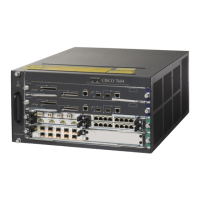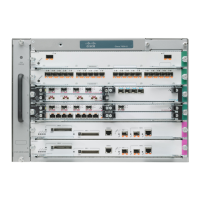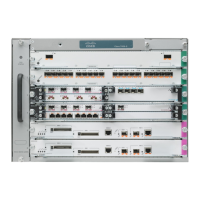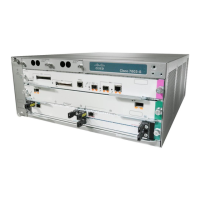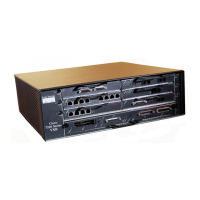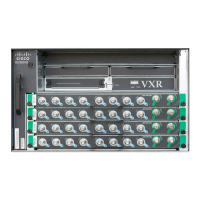34-7
Cisco 7600 Series Router Cisco IOS Software Configuration Guide—12.1E
78-14064-04
Chapter 34 Configuring Local SPAN and RSPAN
Local SPAN and RSPAN Configuration Guidelines and Restrictions
• You cannot configure destination ports to receive ingress traffic.
• Destination ports never participate in any spanning tree instance. Local SPAN includes BPDUs in
the monitored traffic, so any BPDUs seen on the destination port are from the source port. RSPAN
does not support BPDU monitoring.
• All packets sent through the router for transmission from a port configured as an egress source are
copied to the destination port, including packets that do not exit the router through the port because
STP has put the port into the blocking state, or on a trunk port because STP has put the VLAN into
the blocking state on the trunk port.
VSPAN Guidelines and Restrictions
These are VSPAN guidelines and restrictions:
• For VSPAN sessions with both ingress and egress configured, two packets are forwarded from the
destination port if the packets get switched on the same VLAN (one as ingress traffic from the
ingress port and one as egress traffic from the egress port).
• VSPAN only monitors traffic that leaves or enters Layer 2 ports in the VLAN.
–
If you configure a VLAN as an ingress source and traffic gets routed into the monitored VLAN,
the routed traffic is not monitored because it never appears as ingress traffic entering a Layer 2
port in the VLAN.
–
If you configure a VLAN as an egress source and traffic gets routed out of the monitored VLAN,
the routed traffic is not monitored because it never appears as egress traffic leaving a Layer 2
port in the VLAN.
RSPAN Guidelines and Restrictions
These are RSPAN guidelines and restrictions:
• Any network device that supports RSPAN VLANs can be an RSPAN intermediate device.
• Networks impose no limit on the number of RSPAN VLANs that the networks carry.
• Intermediate switches might impose limits on the number of RSPAN VLANs that they can support.
• You must configure the RSPAN VLANs in all source, intermediate, and destination network devices.
If enabled, the VLAN Trunking Protocol (VTP) can propagate configuration of VLANs numbered
1 through 1024 as RSPAN VLANs. You must manually configure VLANs numbered higher than
1024 as RSPAN VLANs on all source, intermediate, and destination network devices.
• If you enable VTP and VTP pruning, RSPAN traffic is pruned in the trunks to prevent the unwanted
flooding of RSPAN traffic across the network.
• RSPAN VLANs can be used only for RSPAN traffic.
• Do not configure a VLAN used to carry management traffic as an RSPAN VLAN.
• Do not assign access ports to RSPAN VLANs. RSPAN puts access ports in an RSPAN VLAN into
the suspended state.
• Do not configure any ports in an RSPAN VLAN except those selected to carry RSPAN traffic.
• MAC address learning is disabled on the RSPAN VLAN.
• You can use an output access control list (ACL) on the RSPAN VLAN in the RSPAN source router
to filter the traffic sent to an RSPAN destination.

